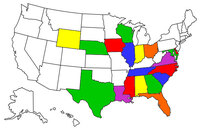Sometimes, often, lower than Visual Meteorological Conditions (VMC) shows up between your departure and your destination. Sometimes this is forecasted and sometimes this is not. Then, VFR pilots will turn back, continue, deviate, fly illegally in the clouds or worse hit mother Earth. After 1 or 2 years of fying around, too many VFR pilots will stop flying and many will not even start flying. Taking the IFR rating is a solution but this is a big step (training, cost, time, recurrencies, etc). What if an EFR (Enroute Flight Rules) rating could be obtain? Then, you could take-off in VMC conditions, fly in the clouds and land in VMC conditions. This type of rating exists in Europe and in Australia. This rating wuold increase Safety and Utility of GA aircraft. Any takers?





 Reply With Quote
Reply With Quote


